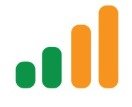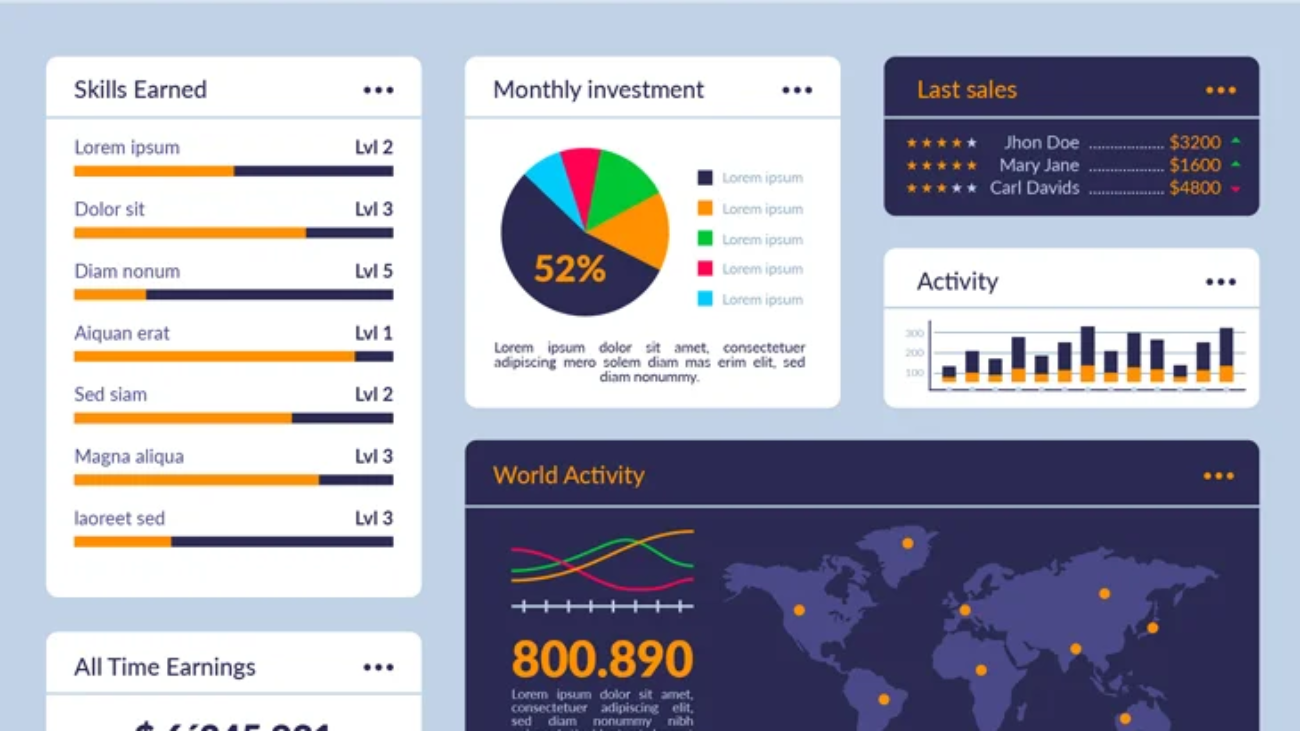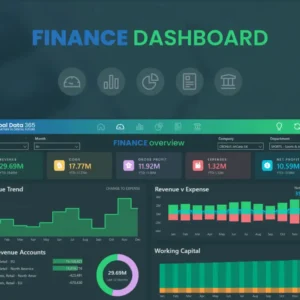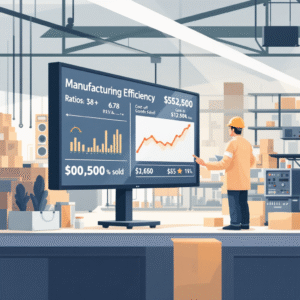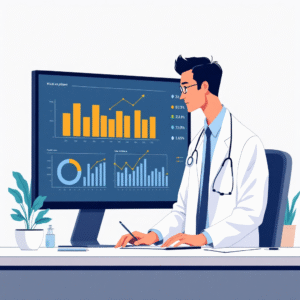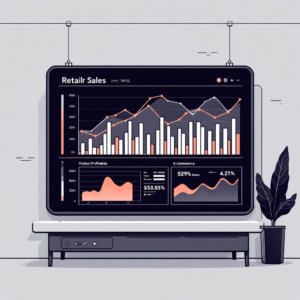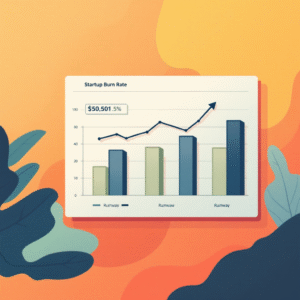In the ever-evolving landscape of data analytics, two tools consistently emerge as frontrunners in the realm of data visualization: Tableau and Power BI. As businesses strive to extract actionable insights from vast amounts of data, the choice between these two platforms becomes increasingly critical. But which tool truly reigns supreme in 2024? This comprehensive guide dives deep into the features, strengths, weaknesses, and use cases of Tableau and Power BI, providing you with the insights needed to make an informed decision.
The Rise and Importance of Data Visualization
Before delving into the specifics of Tableau and Power BI, it’s essential to understand why data visualization has become a cornerstone of modern business intelligence. In today’s data-driven world, organizations are inundated with vast amounts of information. However, raw data alone is of little value. The true power of data lies in its ability to be transformed into actionable insights that can drive decision-making. This is where data visualization comes into play.
Data visualization tools like Tableau and Power BI allow businesses to convert complex datasets into visually compelling formats, making it easier to identify patterns, trends, and outliers. This visual approach not only aids in understanding data but also enhances communication within organizations, enabling stakeholders at all levels to grasp key insights quickly.
Tableau: The Pioneer of Data Visualization
Tableau has been a dominant force in the data visualization space since its inception in 2003. With a strong reputation for its robust analytical capabilities and stunning visual outputs, Tableau is often the go-to tool for data professionals who need to create complex, interactive visualizations.
Key Features of Tableau
- Intuitive Drag-and-Drop Interface: Tableau’s user interface is designed for ease of use, allowing users to create visualizations by simply dragging and dropping data fields onto the canvas. This feature is particularly beneficial for non-technical users who may not be familiar with coding or scripting.
- Extensive Library of Data Connectors: Tableau supports a wide range of data connectors, enabling users to connect to almost any data source, whether it’s a local database, a cloud service, or a web API. This flexibility is crucial for organizations that work with diverse data environments.
- Advanced Data Blending Capabilities: Tableau excels in data blending, which allows users to combine data from different sources into a single, cohesive view. This is particularly useful for organizations that need to integrate data from multiple departments or systems.
- Robust Mapping Functionality: Tableau offers powerful mapping capabilities, making it an ideal choice for geospatial analysis. Users can create detailed maps that incorporate various data layers, enabling them to visualize spatial relationships and trends.
- Strong Community and Support Network: Tableau has built a large and active community of users, which provides a wealth of resources, including forums, tutorials, and user groups. This community-driven support is invaluable for new users looking to learn the tool and for experienced users seeking advanced tips and tricks.
Tableau’s Strengths
Tableau’s strength lies in its ability to create highly customized, interactive visualizations. It offers a level of flexibility that is unmatched by many other tools, making it a favorite among data analysts and scientists who require advanced analytical capabilities. Moreover, Tableau’s strong community and extensive training resources make it easier for organizations to onboard new users and ensure they are using the tool effectively.
Tableau’s Weaknesses
However, Tableau is not without its drawbacks. The tool has a steeper learning curve compared to Power BI, particularly for users who are not familiar with data analytics. Additionally, Tableau’s pricing model can be a barrier for small to medium-sized businesses, as it is generally more expensive than Power BI. The cost of Tableau licenses, combined with the need for additional infrastructure (such as Tableau Server for enterprise deployment), can add up quickly.
Power BI: Microsoft’s Rising Star
Power BI, launched by Microsoft in 2014, has quickly become a formidable competitor to Tableau. Leveraging Microsoft’s extensive ecosystem, Power BI offers seamless integration with other Microsoft products, making it an attractive option for organizations already invested in the Microsoft environment.
Key Features of Power BI
- Deep Integration with Microsoft Office Suite: Power BI integrates seamlessly with other Microsoft products, such as Excel, SharePoint, and Teams. This integration is a significant advantage for organizations that rely heavily on Microsoft tools for their day-to-day operations.
- AI-Powered Insights: Power BI incorporates advanced AI features, such as natural language processing (NLP) and machine learning algorithms, to provide users with automated insights. This makes it easier for users to uncover trends and patterns in their data without the need for advanced analytical skills.
- Natural Language Query Capabilities: One of Power BI’s standout features is its Q&A functionality, which allows users to ask questions in natural language and receive answers in the form of visualizations. This feature is particularly useful for non-technical users who may struggle with traditional data querying methods.
- Competitive Pricing Model: Power BI offers a more affordable pricing model compared to Tableau, with a range of options that cater to businesses of all sizes. This makes it an attractive choice for small to medium-sized businesses that need a powerful data visualization tool without breaking the bank.
- Regular Feature Updates: Microsoft frequently updates Power BI with new features and improvements, ensuring that users have access to the latest technology. This commitment to innovation is one of the reasons why Power BI has gained such a strong foothold in the market.
Power BI’s Strengths
Power BI’s primary strength lies in its accessibility. The tool is designed to be user-friendly, with an intuitive interface that is easy for beginners to navigate. This makes it an ideal choice for organizations that need to get up and running quickly without extensive training. Additionally, Power BI’s tight integration with Microsoft products allows for a seamless workflow, particularly for organizations that are already using tools like Excel and SharePoint.
Power BI’s Weaknesses
Despite its many strengths, Power BI does have some limitations. While it is capable of handling large datasets, it may struggle with extremely large or complex data compared to Tableau. Additionally, while Power BI offers a solid range of visualization options, it may not provide the same level of customization and interactivity as Tableau. Finally, while Power BI is generally more affordable, its pricing can become complex when considering the various add-ons and premium features available.
Head-to-Head Comparison: Tableau vs. Power BI
To provide a clearer picture of how these two tools stack up against each other, let’s compare Tableau and Power BI across several key dimensions.
- Ease of Use
Tableau: Tableau’s interface is powerful but comes with a steeper learning curve. It is designed with data analysts in mind, and while it offers a drag-and-drop interface, mastering all its features may require more time and training, especially for non-technical users.
Power BI: Power BI is known for its user-friendly interface, which is more accessible to beginners, particularly those familiar with other Microsoft products. The learning curve is gentler, making it easier for new users to start creating visualizations quickly.
Verdict: If ease of use and quick adoption are priorities, Power BI has the edge. However, for users who need advanced analytics and are willing to invest in learning the tool, Tableau offers greater flexibility.
- Data Handling Capabilities
Tableau: Tableau excels in handling large and complex datasets. It is designed to perform well with big data, and its data blending capabilities are among the best in the industry.
Power BI: Power BI is capable of handling large datasets, but it may encounter performance issues with extremely large or complex data compared to Tableau. However, Power BI’s integration with Azure and its data warehousing solutions can mitigate some of these limitations.
Verdict: Tableau is the better choice for organizations dealing with large, complex datasets that require advanced data handling capabilities.
- Visualization Options
Tableau: Tableau is renowned for its extensive range of visualization options and customization capabilities. Users can create highly interactive and aesthetically pleasing visualizations that go beyond traditional charts and graphs.
Power BI: Power BI offers a solid selection of visualization options, but it is more focused on business-oriented visualizations like charts and dashboards. While it provides customization options, it may not offer the same level of flexibility as Tableau.
Verdict: Tableau wins in terms of visualization options, making it the preferred choice for users who need to create complex, customized visualizations.
- Integration and Connectivity
Tableau: Tableau boasts an extensive list of data connectors, allowing it to integrate with a wide range of data sources and platforms. This flexibility is crucial for organizations that work with diverse data environments.
Power BI: Power BI shines in its integration with Microsoft products, offering seamless connectivity with tools like Excel, SharePoint, and Azure. It also supports a growing list of third-party connectors, though it may not be as extensive as Tableau’s offering.
Verdict: The choice here depends on your existing technology stack. If you’re deeply invested in the Microsoft ecosystem, Power BI is the better choice. For organizations with diverse data environments, Tableau’s extensive connectivity options make it more suitable.
- Pricing
Tableau: Tableau’s pricing is generally higher, with a more complex model that can be challenging for large organizations to navigate. The cost can quickly add up, particularly for enterprise deployments that require Tableau Server or Tableau Online.
Power BI: Power BI offers a more affordable entry point, with pricing options that cater to businesses of all sizes. Its pricing model is more straightforward, making it easier for organizations to scale as needed.
Verdict: Power BI is the more cost-effective option, especially for small to medium-sized businesses. However, organizations that prioritize functionality over cost may still find value in Tableau’s higher pricing.
- Mobile Experience
Tableau: Tableau provides a robust mobile app with full functionality, allowing users to create and interact with visualizations on the go. The app is designed to replicate the desktop experience, making it a powerful tool for mobile users.
Power BI: Power BI also offers a mobile app, which is user-friendly and integrates well with other Microsoft products. However, it may have some limitations compared to the desktop version, particularly in terms of creating new visualizations.
Verdict: Tableau’s mobile app offers a more comprehensive experience, making it the better choice for users who need full functionality on their mobile devices.
- Collaboration Features
Tableau: Tableau offers strong collaboration tools, including Tableau Server and Tableau Online, which allow for enterprise-wide sharing and collaboration. These tools are designed to support large teams and complex workflows.
Power BI: Power BI excels in collaboration, particularly when used in conjunction with other Microsoft tools like Teams and SharePoint. The integration with these tools makes it easy for teams to collaborate on data and share insights across the organization.
Verdict: Power BI has an edge in collaboration, especially for organizations already using Microsoft’s suite of collaboration tools. Tableau’s collaboration features are strong but may require more setup and infrastructure.
Real-World Use Cases: Tableau vs. Power BI
To provide a clearer understanding of when to use Tableau and when to use Power BI, let’s explore some real-world use cases that highlight the strengths of each tool.
Use Case 1: Large Retail Chain with Complex Data Needs
Scenario: A large retail chain with thousands of stores across multiple regions needs to analyze sales data, inventory levels, and customer behavior. The data is stored in various systems, including a CRM, an ERP, and a point-of-sale system. The company requires advanced analytics to identify trends, optimize inventory, and personalize marketing efforts.
Solution: Tableau is the ideal choice for this scenario. Its ability to handle large, complex datasets and perform advanced analytics makes it well-suited for the retail chain’s needs. The company can use Tableau to blend data from different sources, create interactive dashboards that highlight key trends, and drill down into specific regions or product lines. Tableau’s robust mapping capabilities also allow the company to visualize sales data on a geographic basis, making it easier to identify regional patterns and optimize store locations.
Use Case 2: Mid-Sized Manufacturing Firm with a Focus on Cost-Effectiveness
Scenario: A mid-sized manufacturing firm needs to monitor production efficiency, track supply chain performance, and manage budgets. The firm is already heavily invested in Microsoft products, using Excel for data analysis and SharePoint for document management. The firm needs a cost-effective solution that integrates seamlessly with its existing tools.
Solution: Power BI is the perfect fit for this manufacturing firm. Its deep integration with Excel allows the company to easily import and analyze data from existing spreadsheets, while its connectivity with SharePoint enables smooth collaboration and document sharing. The firm can use Power BI to create dashboards that track key performance indicators (KPIs), monitor production metrics, and generate reports for management. The competitive pricing of Power BI ensures that the firm gets the insights it needs without overspending on software.
Use Case 3: Financial Services Firm with a Need for Regulatory Compliance
Scenario: A financial services firm needs to analyze vast amounts of financial data to ensure regulatory compliance and identify potential risks. The firm operates in a highly regulated environment and requires tools that can handle sensitive data securely. The firm also needs advanced analytics to detect fraud, assess credit risk, and optimize investment portfolios.
Solution: Tableau’s advanced analytics capabilities make it the right choice for this financial services firm. The firm can use Tableau to build complex models that assess credit risk, identify potential fraud, and ensure compliance with regulatory requirements. Tableau’s ability to connect to various data sources allows the firm to integrate data from different departments and systems, providing a comprehensive view of financial performance. Additionally, Tableau’s strong data governance features ensure that sensitive data is handled securely, meeting the firm’s compliance needs.
Use Case 4: Non-Profit Organization with Limited Resources
Scenario: A non-profit organization needs to track donations, monitor program outcomes, and report to stakeholders. The organization operates on a tight budget and has limited IT resources. It needs a user-friendly tool that can be quickly adopted by staff members who may not have extensive technical skills.
Solution: Power BI is the ideal solution for this non-profit organization. Its affordable pricing and user-friendly interface make it accessible to staff members with limited technical expertise. The organization can use Power BI to create dashboards that track donations, visualize program outcomes, and generate reports for donors and stakeholders. Power BI’s natural language query capabilities also make it easy for non-technical users to interact with the data, asking questions and receiving answers in the form of visualizations.
The Future of Data Visualization: Emerging Trends
As we look ahead to the future of data visualization, both Tableau and Power BI continue to evolve, incorporating cutting-edge technologies that promise to further enhance their capabilities. Here are some of the emerging trends that are shaping the future of these tools:
- Augmented Analytics
Augmented analytics, which combines AI and machine learning with traditional analytics, is becoming a key focus for both Tableau and Power BI. These tools are increasingly incorporating AI-driven insights that help users uncover hidden patterns, predict future trends, and automate data analysis tasks. For example, Power BI’s AI-powered insights and Tableau’s Explain Data feature are designed to provide users with deeper insights without the need for advanced analytical skills.
- Natural Language Processing (NLP)
Natural language processing (NLP) is transforming the way users interact with data. Both Tableau and Power BI are investing in NLP capabilities that allow users to ask questions in natural language and receive answers in the form of visualizations. This trend is making data analysis more accessible to non-technical users, enabling them to explore data and generate insights without needing to know how to write complex queries.
- Real-Time Data Visualization
As businesses increasingly rely on real-time data to make decisions, both Tableau and Power BI are enhancing their capabilities to handle streaming data. Real-time data visualization allows organizations to monitor live data feeds, such as social media activity, website traffic, or IoT sensor data, and react quickly to emerging trends or issues. This trend is particularly important for industries like finance, retail, and manufacturing, where timely decision-making is critical.
- Enhanced Mobile Experiences
With the growing importance of mobile devices in the workplace, both Tableau and Power BI are improving their mobile apps to offer greater functionality and a better user experience. Enhanced mobile experiences allow users to access and interact with their data on the go, ensuring that they can stay informed and make decisions regardless of their location. This trend is particularly relevant for businesses with mobile workforces or remote teams.
- Data Governance and Security
As organizations become more data-driven, the need for robust data governance and security features is becoming increasingly important. Both Tableau and Power BI are focusing on enhancing their data governance capabilities to ensure that organizations can manage their data securely and comply with regulatory requirements. This includes features like role-based access control, data encryption, and audit trails, which are essential for organizations operating in regulated industries.
Making the Right Choice for Your Organization
Choosing between Tableau and Power BI ultimately depends on your specific needs, budget, and existing technology stack. Here are some scenarios to consider when making your decision:
When to Choose Tableau
- Your organization prioritizes advanced analytics and complex data visualization.
- You have a team of experienced data analysts who can take full advantage of Tableau’s capabilities.
- You need to handle and visualize large, complex datasets.
- Budget is less of a concern compared to functionality and flexibility.
When to Choose Power BI
- Your company is already heavily invested in the Microsoft ecosystem.
- You need a more cost-effective solution, especially for smaller teams or organizations with limited budgets.
- Ease of use and quick adoption are priorities, particularly for non-technical users.
- You require frequent updates and new features, and you value tight integration with other Microsoft products.
Conclusion: The Best Tool Is the One That Fits Your Needs
In the Tableau vs. Power BI debate, there is no definitive answer to which tool is better—it all depends on your organization’s specific needs, technical expertise, and long-term data strategy. Tableau’s strength in advanced analytics and data handling makes it ideal for organizations with complex data needs and experienced analysts. On the other hand, Power BI’s user-friendly interface, affordability, and seamless integration with Microsoft products make it a compelling choice for businesses looking for an accessible, cost-effective solution.
As both tools continue to evolve, it’s essential to stay informed about new features and trends that may impact your decision. Whether you choose Tableau or Power BI, the key is to leverage these powerful tools to their fullest potential, transforming your data into actionable insights that drive business success.
Share Your Experience
What has been your experience with Tableau or Power BI? Have you found one to be particularly effective for your business needs? Share your thoughts and experiences in the comments below—your insights could be invaluable to others making this important decision!
